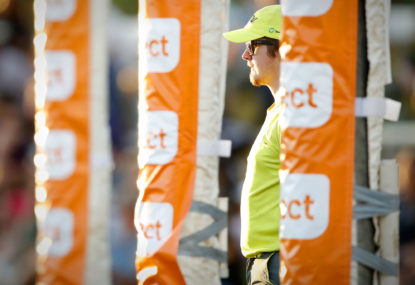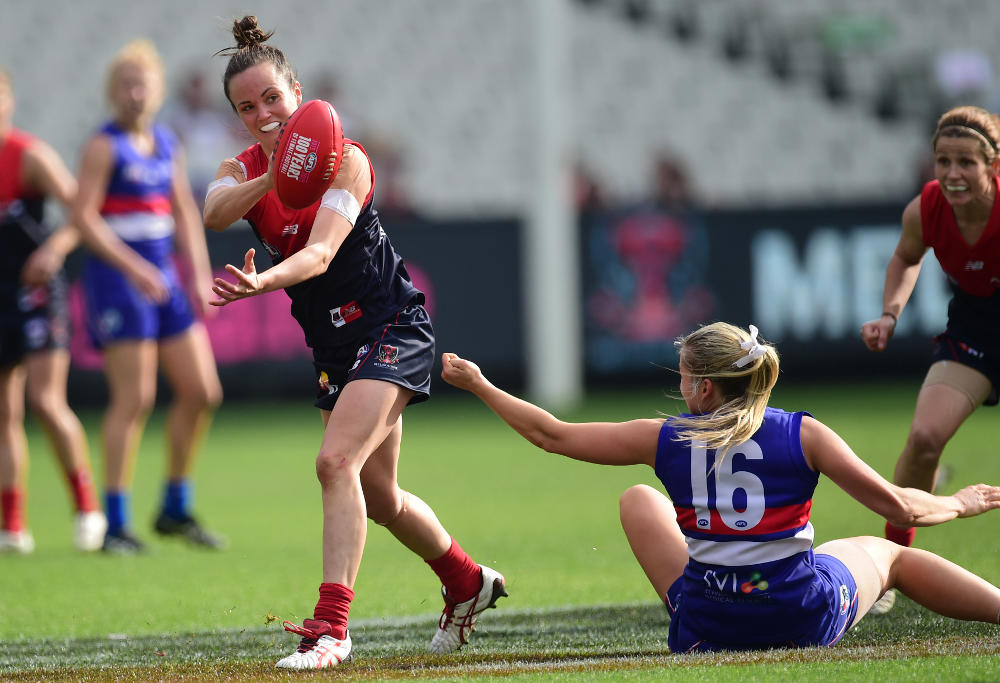WATCH: North great sent off on local footy debut after appearing to headbutt opponent
Jack Ziebell was playing his first match for Avondale Heights when he was yellow-carded for headbutting an opponent during a scuffle following a late…

It’s time to look at the MRP in the women’s game. Currently, the match review “panel” is one man, Michael Christian, who is in charge of everything from grading the reported incident to deciding upon guilt and the suitable punishment.
This is not a conversation to discuss the merits of one person being in charge, to do so would be hugely unfair on Michael Christian for simply taking a job that was offered to him; instead it is to look at whether having one person overseeing both the AFL and AFLW is the best way to go.
I can hear all manner of arguments now around the consistency in decision making being important, and it is, but I contend that at the moment there isn’t consistency between the men’s and women’s game as it is anyway.
I look at Dayna Cox being reported for contact to Ellie Blackburn as an example, it was definitely a free kick, but past warranting that I’m really not sure it should have been sent to the tribunal.
Even looking at it as a free kick, in a stoppage situation like that I would expect players to be wanting to push off in that sort of way to get into some space – so how much of it was the actual act as opposed to Ellie Blackburn not being prepared for it?
It’s hard to say, but I doubt very much in the men’s game we would have seen it sent to the tribunal, much less ending up with a reprimand. There are of course other instances throughout the season, but that is the most obvious which springs to mind.
But going back to the consistency, it’s hard not to think that perhaps the men get away with a little bit more than the women.
Why this seems to be is hard to say; it could be about the AFL wanting as clean of an image for the AFLW as possible to encourage young girls to play, or it could be that perhaps how society still, even if subconsciously, views women plays a part.
Although it has absolutely no relationship to football for a second, you only have to look at the treatment Candice Warner has copped in South Africa to know that women are still held to a different standard in many ways to men.
Whatever happened back in 2007, neither party did anything wrong from what’s been reported. Yet time and time again, she and her family are forced to face the most ridiculous comments and personal attacks for what? Doing what people in their early 20s are prone to do? It wouldn’t be the case if she were a man.
Bringing it back to football, when people watching see a woman on the ground or with a bloody nose they do react differently to when it’s a male player in the same position.
I’ve seen it first-hand. It’s the same place where a lot of the old argument that women shouldn’t play footy stems from. Sure, some of it is just good old-fashioned gender stereotyping and misogyny; but a lot of it also seems to stem from the fact that a lot of people don’t like seeing women in particular get hurt; even if the physical aspect of the game is one of the things many say they love most about it.

(AAP Image/Julian Smith)
In reality, it’s likely a bit of both. From a business perspective it would be foolish for the AFL to not want the women’s game to be as attractive an option as possible for parents to let their kids play.
But I feel it also harks back to men feeling like they need to protect women, and so when a player appears to injure a player illegally, this long-held instinct kicks in.
This isn’t a shot at men at all for this instinct either, it’s natural and is in many instances, very useful and appropriate to feel that way.
A young woman walking through a carpark at midnight is probably going to be very appreciative of someone walking with her back to her car. But in the case of football, it’s maybe not such a positive.
But women’s football is also a very different game to men’s football as well, and that is a fact which can’t be ignored either.
Which is why it’s vital to next year have separate MRPs one for the men and one for the women. It doesn’t matter what form it takes, whether it stays as one person or becomes an actual panel, what’s important is that whoever makes these decisions knows women’s football.
There are plenty of people who are more than qualified, Debbie Lee although currently affiliated with the Bulldogs, would be perfect. Meg Hutchins, whenever it is that she decides to stop being a gun player, would be another.
They aren’t going to be looking on with there “women’s footy” glasses, they’re just going to be watching footy, and there is a key difference in those two things. They’ll see the hits and contact for what they are, without looking at how a certain player ended up after.
Sometimes on a footy field things just happen and it’s just the nature of the game, but there have also been instances where poor technique from the injured player has perhaps played a part in making things a lot worse than it might have been.
I think of Cora Staunton against Collingwood and while, yes, Sophie Casey left the ground, the position Cora was in to make that tackle was going to end up with a broken nose at some point.
I’m not blaming her for it happening, but you have to look at the incident as a whole and it didn’t really feel like that happened in many ways.
The blood and the fact the nose was broken meant that the pictures weren’t great and were never going to help at the tribunal, and Sophie Casey may well have been suspended anyway, but it certainly seemed that it was a done deal from many areas of the football media before Channel 7 even started showing the replays.
Whether that was for the reasons stated before I can’t say, but we are certainly more used to seeing men in that state than women. Which is why having people with years of experience in women’s football on the MRP would be a huge benefit to the game – they’re used to it, they’ve seen it and won’t necessarily have the same reaction a lot of people have when seeing that sort of thing.
Not only that, but you’re also creating more jobs for women in the football space, which if we’re truly committed to growing the game is just as important as growing the number of women playing.